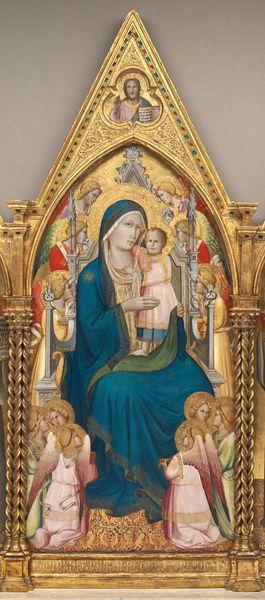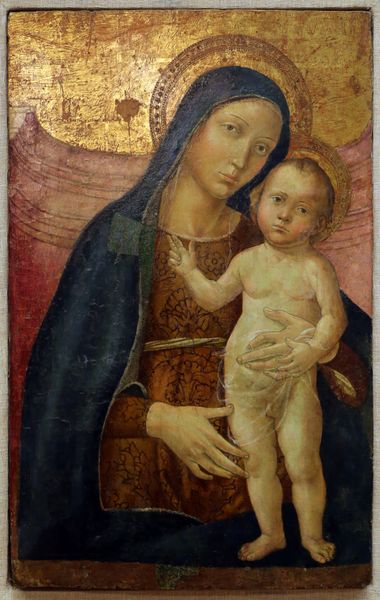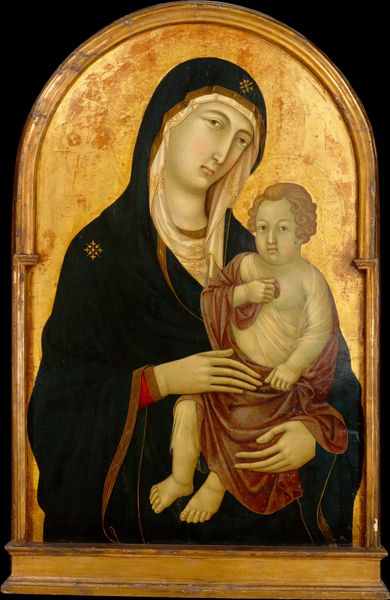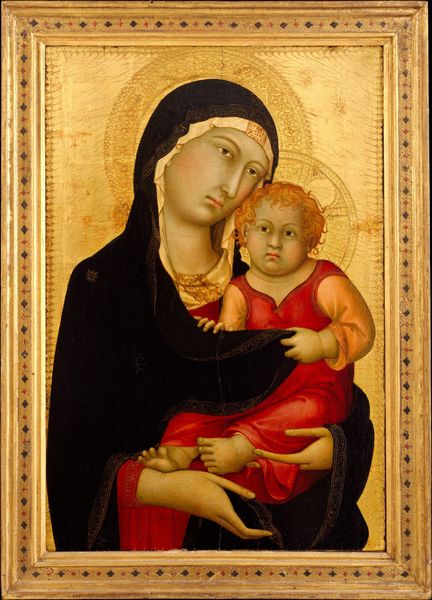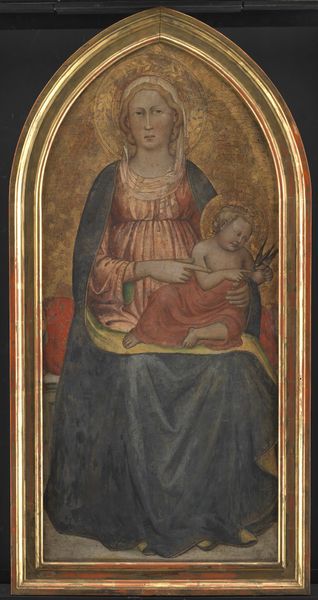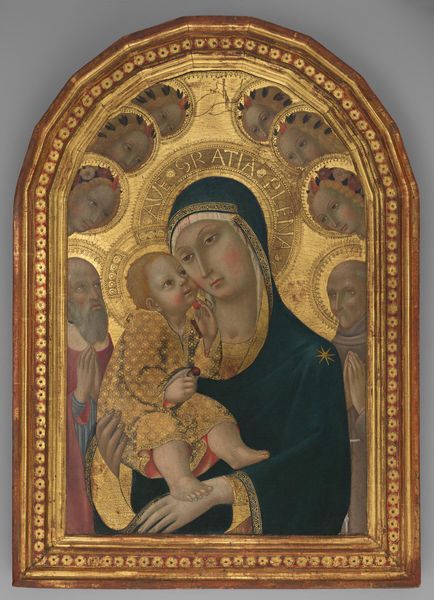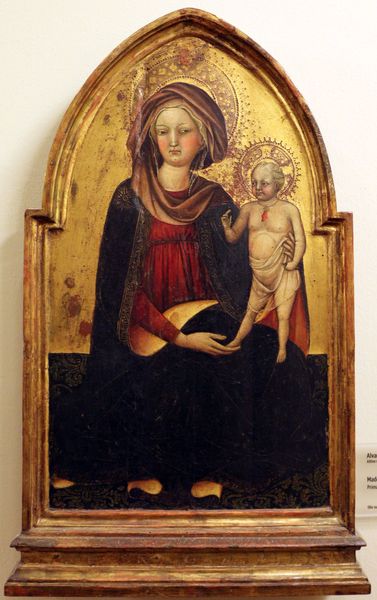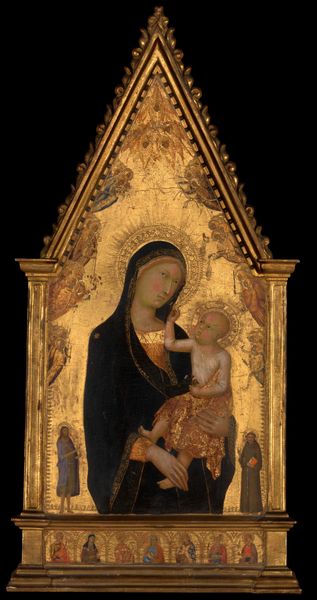
painting, oil-paint
#
portrait
#
painting
#
oil-paint
#
figuration
#
oil painting
#
italian-renaissance
#
early-renaissance
#
portrait art
Copyright: Public domain
Curator: Looking at this artwork, "Madonna in trono col bambino" or "Madonna Enthroned with Child" created circa 1450 by Lo Scheggia, an Italian early Renaissance artist, it evokes for me a distinct sense of solemnity and timeless grace. What strikes you upon first viewing? Editor: Immediately I am drawn to the deep, cool blue of her mantle. There is a stillness to the fabric that indicates a great deal about the types of materials Scheggia worked with. Curator: Yes, and situating this painting within the patriarchal structures of the early Renaissance, the Madonna is depicted as a symbol of both maternal love and divine authority, simultaneously powerful and constrained by societal expectations. This depiction certainly complicates readings of female agency at the time, especially given the material context. Editor: Certainly. One notices how the gold leaf, rather than creating luminosity, serves to flatten the space, emphasizing the two-dimensionality. How different from some other artworks in this period! The material realities here seem geared toward surface decoration more than atmospheric illusion. It brings forward this push and pull between what’s real, in this case the artist's oil pigment, versus divine symbolism. Curator: Exactly. Moreover, consider the baby Jesus's gesture. It has significance too; it speaks to the power of the Church as gatekeeper of spiritual access within a heavily mediated theological landscape, influencing familial structures of power and intergenerational norms through symbolic representation. Editor: Absolutely. I find myself lingering on the details of the roses, they seem quite carefully painted in relation to the gold and more rigid halo, so to speak. The making, and materiality behind this artwork seems deeply linked to ritual and, frankly, expensive materials. How did that inform the viewing public, then and now? Curator: And how has our perception of such a well-known, almost codified, subject changed over time due to the artwork’s presence in diverse sociocultural environments. It compels us to question what cultural significance lies at the heart of its creation, reproduction, and, most importantly, reception. Editor: A close study of these materials certainly opens our eyes to questions of class, artistic labour, and consumption. It certainly moves the work forward. Curator: Yes, that’s why it is crucial to continue exploring its narrative richness, given our increasingly urgent cultural recontextualizations. Thank you. Editor: Of course! Looking more deeply can offer insights into even well-trod materials.
Comments
No comments
Be the first to comment and join the conversation on the ultimate creative platform.
